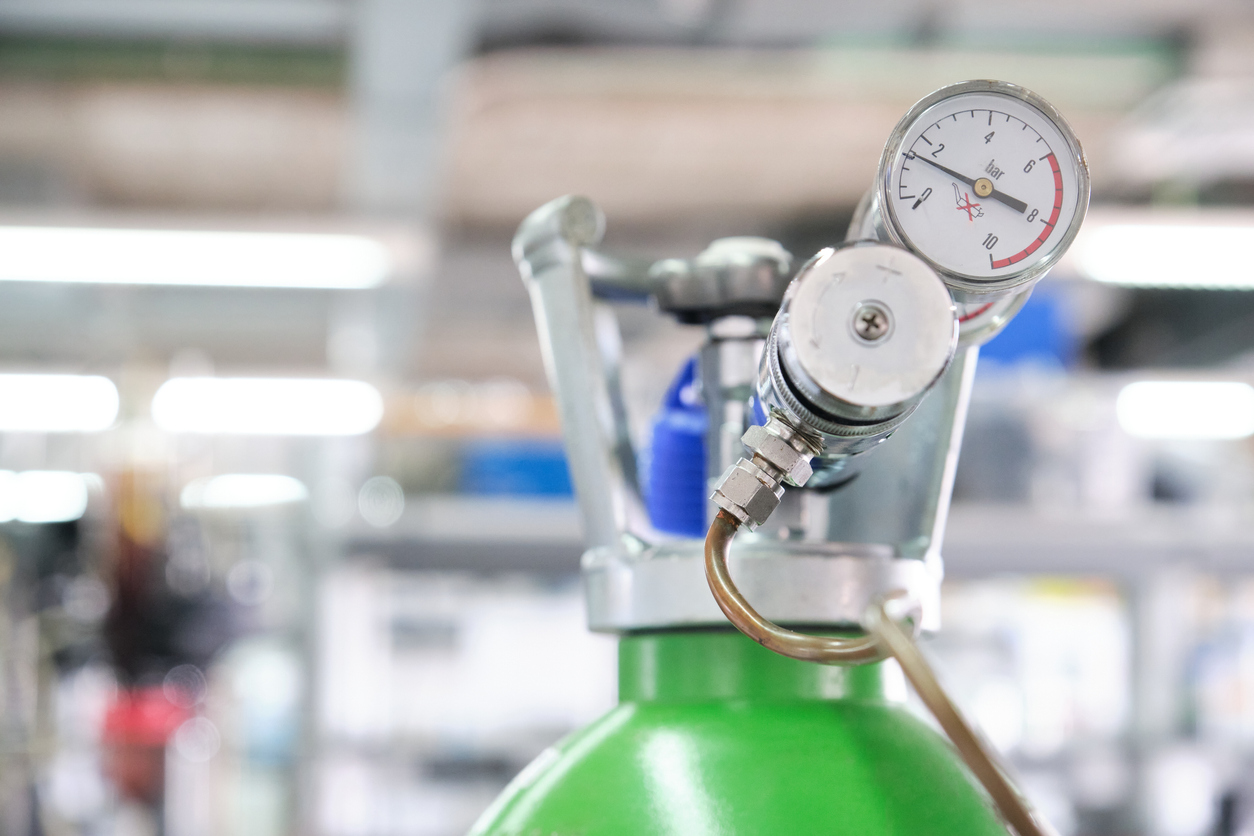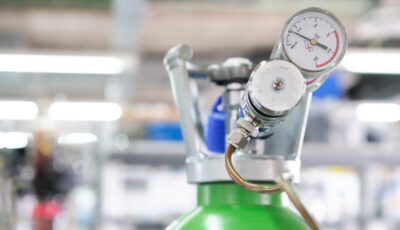High Purity Oxygen Production: The Industrial Manufacturing Process
High purity oxygen production can be achieved through the process of pressure swing adsorption (PSA) using specialized molecular sieve adsorbents. By leveraging the selective adsorption properties of molecular sieves, contaminants such as nitrogen and other impurities can be removed from air, resulting in the production of high purity oxygen suitable for various industrial and medical applications.

High Purity Oxygen Production Methods
In the industrial sector, the demand for high purity oxygen is ever-increasing. This is where methods such as pressure swing adsorption (PSA), vacuum pressure swing adsorption (VPSA), and cryogenic distillation come into play. Let’s start with pressure swing adsorption (PSA).
With PSA, the air is passed through a bed of adsorbent material, typically zeolite or activated carbon, which selectively captures nitrogen and other gases, allowing the purified oxygen to pass through at higher pressure. This method is based on the differential adsorption affinity of various gases on solid surfaces. The captured contaminants are then released when the pressure is reduced, and the cycle starts again.
Moving on to vacuum pressure swing adsorption (VPSA), this method involves a similar process to PSA but operates under a vacuum rather than at atmospheric pressure. This allows for better separation of gases due to the difference in equilibrium conditions at lower pressures.
The next method to explore is cryogenic distillation. In this process, air is cooled to very low temperatures until it becomes a liquid. Once in a liquid state, the air separates into its components by taking advantage of their different boiling points. Since nitrogen has a lower boiling point than oxygen, it vaporizes first, leaving behind high purity liquid oxygen.
For instance, in medical environments where high purity oxygen is required for respiratory therapy or surgical procedures, cryogenic distillation is often favored due to its ability to produce extremely high-purity oxygen.
Each of these methods results in high-purity oxygen with levels reaching 90-95% or even higher. Such levels are well-suited for industrial usage across various sectors including metallurgy, glassmaking, and pharmaceuticals. The versatility of these methods speaks volumes about their significance in meeting the diverse and challenging needs of modern industries.
Understanding these methods sheds light on how industries can efficiently produce high-purity oxygen for their specific applications. Now that we’ve dived into various production methods, let’s explore some common applications of high-purity oxygen across different industries.
Purification of Oxygen from Atmospheric Air
When producing high-purity oxygen, the process begins with something we inhale every day – air. However, not just any air suffices. It must be exceptionally clean because impurities like moisture and other gases can disrupt the entire process. Hence, the first step revolves around treating the air to eliminate these impurities.
Moisture, carbon dioxide, and hydrocarbons might appear harmless in everyday life, but when creating high-purity oxygen, they become troublesome. This necessitates pre-treating the air to remove them. Typically, this involves passing the air through a series of filters or using adsorption to trap and eliminate these impurities.
The Pre-treatment Process
The pre-treatment process is pivotal in ensuring that the air is as pure as possible before moving on to subsequent steps. An integral aspect involves utilizing a molecular sieve (such as 3A, 4A, 5A, or 13X) or activated alumina to desiccate and cleanse the air. Molecular sieves are materials with uniformly sized pores that excel at trapping moisture and certain gases.
Here’s what happens:
- The air is pushed through the molecular sieve to absorb any moisture and carbon dioxide present in it.
- The molecular sieve traps these impurities while allowing the oxygen and nitrogen to pass through.
By eliminating these impurities at this early stage, we set ourselves up for success in producing high-purity oxygen.
Principles of Fractionation Process
When it comes to producing high-purity oxygen on an industrial scale, the fractionation process is an instrumental method. This method capitalizes on a fundamental property of oxygen and nitrogen—their different boiling points. This difference in boiling points allows for the separation of these gases through a process known as distillation.
Distillation—this word might remind you of chemistry class. Simply put, it’s a method that takes advantage of different boiling temperatures to separate liquids or gases from one another. In our context, this is essential for drawing out high purity oxygen from atmospheric air.
Low-Temperature Distillation
Think about boiling water in your kitchen. Water turns into steam at a temperature of 100°C, but did you know that other substances turn into gas at different temperatures? When we cool down air to very low temperatures (much lower than regular freezing temperatures), oxygen turns into liquid before nitrogen does.
In an industrial setting, this low-temperature distillation process occurs in large columns called air separation units. The air is compressed, cooled, and then released into these towering columns. As it ascends, the air becomes progressively cooler until it reaches such low temperatures that the oxygen starts to turn into liquid while most of the nitrogen stays in its gaseous form.
This phenomenon is similar to when dew collects on grass early in the morning. The cooling of the air causes some water vapor to condense into dew. In our case, this process separates the oxygen from the nitrogen in the air mixture based on their differing boiling points.
Separation and Purification
The liquid oxygen and remaining gaseous nitrogen are then separated at the top of the column. This straightforward yet precise method effectively isolates the high-purity oxygen. Once separated, the pure oxygen can be stored in special tanks or transported for various industrial applications.
Understanding this process allows us to better appreciate how something as essential as oxygen can be isolated and made available at unprecedented purity levels. The efficiency and precision with which this process operates speak volumes about its significance in our daily lives and across many industries.
The fractionation process is truly remarkable; by skillfully manipulating the differing boiling points between oxygen and nitrogen, tremendous volumes of high-purity oxygen can be produced reliably on an industrial scale.
Introducing Increase Pressure Technology
Increased pressure technology plays a crucial role in the production of high-purity oxygen. It involves using advanced systems such as pressure swing adsorption (PSA) or vacuum pressure swing adsorption (VPSA), designed to separate oxygen from other gases like nitrogen and carbon dioxide.
In a PSA system, compressed air is initially passed through a bed of adsorbent material to remove impurities. This bed selectively traps nitrogen, carbon dioxide, and other contaminants while allowing high-purity oxygen to pass through. Then, the pressure is released, and the trapped impurities are discharged, preparing the system for another cycle to collect more pure oxygen. On the other hand, VPSA systems operate under lower pressures than PSA and leverage vacuum pumps to release the trapped impurities, making them efficient for certain applications. The key to these processes lies in the special adsorbents used, such as zeolites or activated alumina, which have high affinities for specific gases. By exploiting the different rates at which different gases are adsorbed onto these materials under pressure variations, an efficient separation is achieved.
The Role of Advanced Adsorption Processes
These increased pressure technologies are vital for various industrial applications where high-purity oxygen is required. For instance, they are extensively used in medical facilities for breathing support and respiratory therapy – ensuring that patients receive safe and pure oxygen. In manufacturing processes, these technologies play a key role in enhancing combustion efficiency and enabling precise control over chemical reactions.
Moreover, the ability to generate high-purity oxygen on-site reduces dependence on external suppliers and streamlines the production process. This not only fosters operational flexibility but also minimizes long-term costs associated with sourcing and transporting bulk oxygen supplies.
In summary, increased pressure technology incorporating PSA and VPSA systems stands as a cornerstone for producing high-purity oxygen across diverse industries. It embodies innovation and precision, ensuring reliable access to this critical resource.
Role of Liquid Air Fractionation
In the world of high purity oxygen production, liquid air fractionation plays a crucial role in efficiently separating the various components of air to obtain high purity liquid oxygen. The process begins by cooling atmospheric air until it liquefies at extremely low temperatures and then distilling the liquid air at specific temperatures to isolate its components such as oxygen, nitrogen, and argon. This precise separation allows for the extraction of high purity liquid oxygen, subsequently transformed into gaseous high purity oxygen.
The importance of this process cannot be understated; it offers a highly effective means of obtaining pure oxygen on an industrial scale. As the air is cooled and condensed into a liquid state, the subsequent distillation step becomes vital in selectively extracting oxygen, ensuring that impurities are removed to achieve the desired level of purity.
Once this extraction process is complete, the resulting high-purity liquid oxygen can undergo further processing to convert it into gaseous form. This gaseous high-purity oxygen is a vital component in numerous industrial applications, from cutting and welding to medical and healthcare uses. Therefore, the efficiency and precision of the liquid air fractionation process are imperative in ensuring a steady and reliable supply of high-purity oxygen for various industries.
One may liken this process to the careful craftsmanship of a master distiller creating the finest whiskey; it involves patience and precision to extract the purest essence from a complex mixture and deliver it to a discerning audience.
From manipulating air at ultra-low temperatures to obtaining gaseous high-purity oxygen suitable for various industrial applications, it’s clear how essential the role of liquid air fractionation is in the overall process of producing high-purity oxygen for widespread use.
Application in Large Scale Plants
Large scale production of high purity oxygen has wide-ranging applications across various industries, significantly impacting processes in steelmaking, pharmaceuticals, chemical manufacturing, and wastewater treatment. The technology is also vital in medical fields for respiratory therapy and plays a crucial role in environmental applications for pollution control.
Steelmaking: In the steel industry, oxygen is used to fuel blast furnaces and convert iron into steel. The high purity of oxygen produced through liquid air fractionation ensures that impurities are minimized, leading to higher quality end products. Additionally, the controlled combustion facilitated by high purity oxygen allows for precise temperature regulation, an essential factor in guaranteeing the quality and integrity of the steel products.
Pharmaceuticals: The pharmaceutical industry relies on high purity oxygen for various processes, from fermentation to aerobic respiration in microbes during the production of antibiotics and other medications. The inherent cleanliness achieved with high purity oxygen is critical for ensuring the safety and efficacy of pharmaceutical products.
Chemical Manufacturing: High purity oxygen is indispensable in chemical manufacturing processes. It enhances both oxidation and gasification reactions, optimizing efficiency and reducing the formation of undesirable byproducts. Furthermore, its use enables manufacturers to increase production while maintaining stringent quality standards.
Wastewater Treatment: In this context, oxygen serves as a critical component in the biological treatment of wastewater. It fuels aerobic bacteria, which break down organic contaminants and pollutants, contributing to cleaner water outputs. By leveraging high purity oxygen, wastewater treatment plants can ensure more effective and efficient treatment processes.
Medical Field: Beyond industrial applications, high purity oxygen is widely employed for respiratory therapy, providing essential support to patients suffering from respiratory conditions. Whether used during surgical procedures or in emergency situations, the reliability and purity of the oxygen supply are paramount for patient care.
Environmental Applications: Notably, high purity oxygen plays a pivotal role in pollution control measures. Its application facilitates more effective incineration processes and aids in reducing harmful emissions, contributing to environmental sustainability efforts.
Overall, the versatile nature of high purity oxygen production through liquid air fractionation underscores its indispensable role across diverse sectors, influencing efficiency, product quality, and environmental sustainability.
Varied Industrial Uses of High Purity Oxygen
High purity oxygen extends far beyond mere production—it also plays a pivotal role in various industries. Let’s begin with metal fabrication, where high-purity oxygen supports oxidation and combustion processes crucial for welding and cutting metal. When combined with acetylene, it produces a high-temperature flame that efficiently cuts through and welds metals, allowing for precise and clean cuts in the fabrication process.
Furthermore, electronics manufacturing heavily relies on high-purity oxygen to create semiconductors. Its high reactivity makes it an ideal gas for chemical vapor deposition (CVD) processes. By using high-purity oxygen, manufacturers can achieve precise control over oxidation reactions, ensuring the production of high-quality silicon wafers and thin films used in electronic devices.
Similarly, in glassmaking, high-purity oxygen plays a vital role by enhancing the combustion process within glass furnaces, leading to higher temperatures and cleaner burning. The result is improved energy efficiency and reduced emissions, allowing for more sustainable glass production.
In the realm of chemical synthesis, high-purity oxygen enhances various chemical reactions due to its ability to create high-temperature environments. Whether it’s for developing pharmaceuticals or producing specialty chemicals, the use of high-purity oxygen ensures a controlled environment that supports efficient chemical transformations, thereby improving product quality.
The versatile nature of high-purity oxygen allows it to sustain high-temperature reactions in multiple manufacturing processes across different industries. Its impact ranges from enabling precision cutting in metal fabrication to fostering the growth of advanced electronic components through controlled chemical vapor deposition methods.
The significance of high-purity oxygen in these diverse industries underscores its indispensable role in supporting critical manufacturing applications and driving advancements across various sectors.
Economics of High Purity Oxygen Production
When it comes to producing high purity oxygen, several economic factors come into play. The process involves energy consumption, capital investment for equipment, and ongoing operating costs. Let’s break these down one by one.
Energy Consumption: The production of high purity oxygen typically demands a significant amount of energy, especially in processes like cryogenic distillation or pressure swing adsorption (PSA). Energy costs can form a substantial portion of the overall operational expenses. Finding ways to optimize energy usage through efficient equipment and improved processes is crucial for cost-effective production.
Capital Investment: Setting up a facility for high purity oxygen production involves considerable capital investment. The cost of specialized machinery, infrastructure, and safety measures contributes significantly to the initial setup expenses. Additionally, the selection of adsorbents and catalysts plays a vital role in determining the efficiency of the production process, thus impacting the long-term operational costs.
Operating Costs: Once the facility is operational, ongoing costs related to maintenance, raw materials, labor, and utilities become major components of the overall expenditure. Effective management of these operating expenses is essential for ensuring sustainable and competitive pricing structures for high purity oxygen.
Efficient adsorbents and catalysts are instrumental in optimizing the production process by minimizing energy consumption and reducing wastage. By utilizing superior adsorbent materials such as molecular sieves and activated alumina, manufacturers can enhance the efficiency of separation processes, leading to reduced operational costs over time.
For instance, utilizing advanced 5A molecular sieve for PSA systems can contribute to increased purity levels while requiring lower energy input, thereby positively impacting the economics of high purity oxygen production. Similarly, leveraging high-performance activated alumina as a desiccant can lead to improved moisture removal efficiency in air separation units, contributing to overall cost savings.
Understanding these economic considerations allows us to appreciate the importance of investing in efficient adsorbents and catalysts for high purity oxygen production. Their impact on operational costs and competitive pricing emphasizes their critical role in sustaining cost-effective manufacturing practices.
Ultimately, the efficiency and economic viability of high purity oxygen production are deeply intertwined with the careful selection of adsorbents and catalysts. To learn more about how Hengye Inc. can support your high purity oxygen production needs with their range of adsorbents and catalysts, contact us at Hengye Inc.. Call us at (844) 308-3271.


